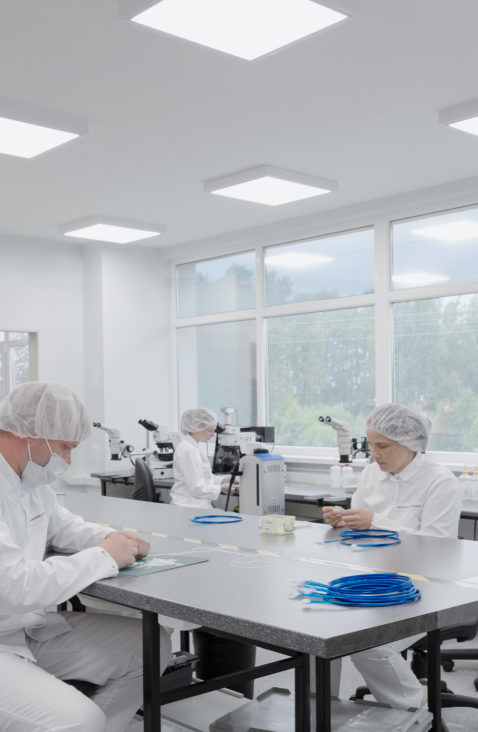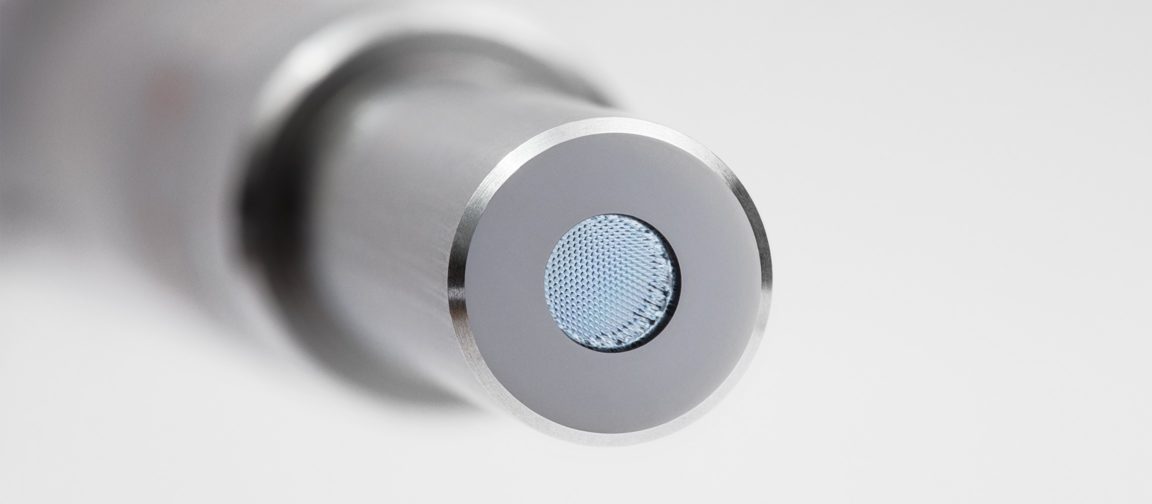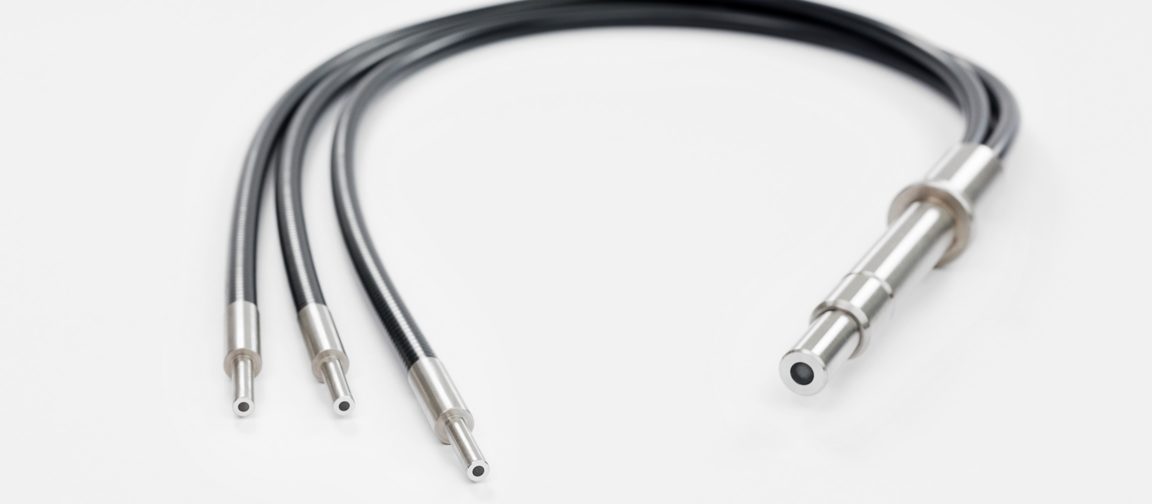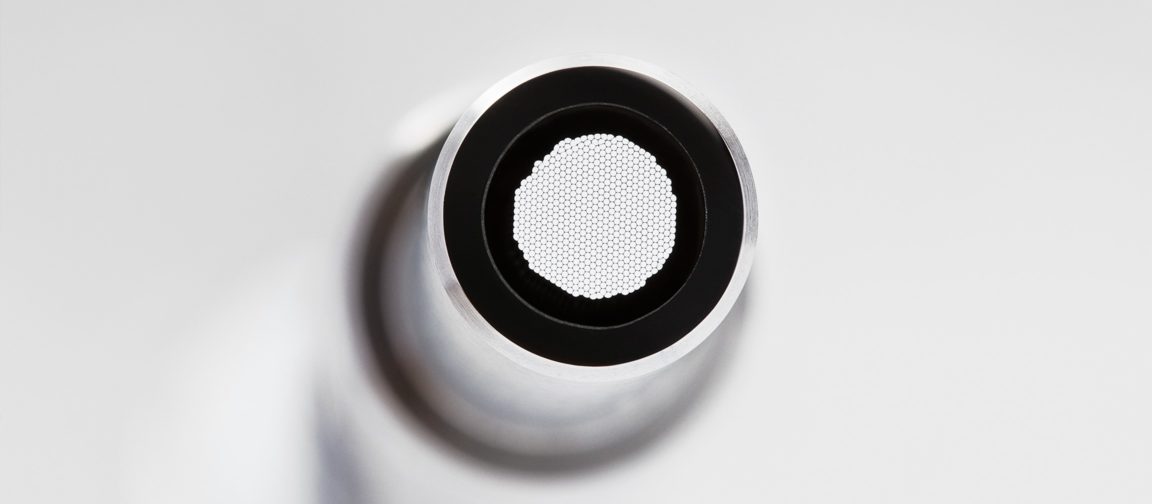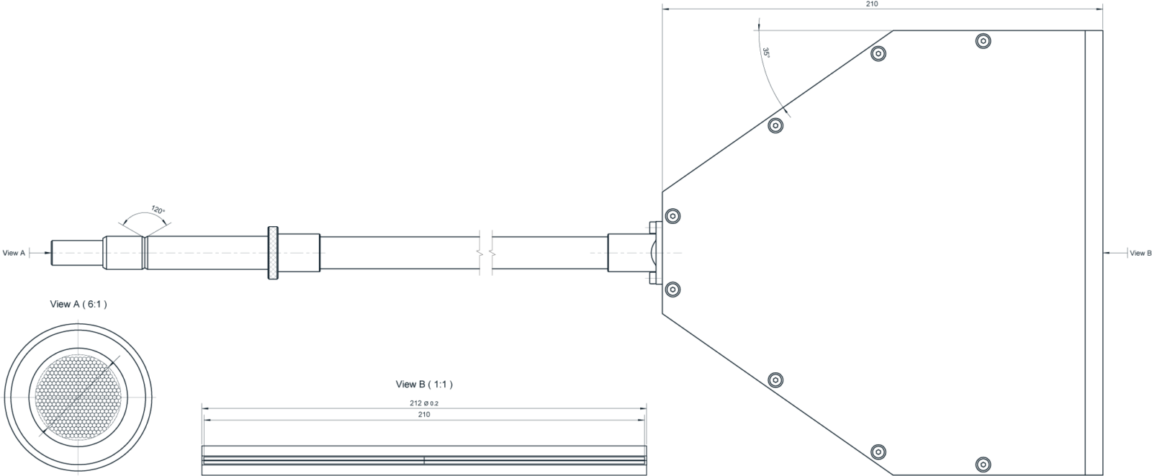Fiber assemblies for UV curing




Lightguide is the right choice if you are looking for effective UV light for:
- coupling from a source in fiber assembly
- delivery from a single source to several operating areas
- a beam shape change to linear or another shape
- products with a long lifetime
Our experienced team faced the need to effectively couple light from UV sources into a fiber bundle and came up with a solution that resolves the main issue of free space between individual fibers when a number of fibers are bundled and terminated in a traditional way (using optical grade epoxy). The left-hand picture below shows an epoxied fiber bundle end, while the right-hand picture displays a Hexagon Fused Bundle (HFB).
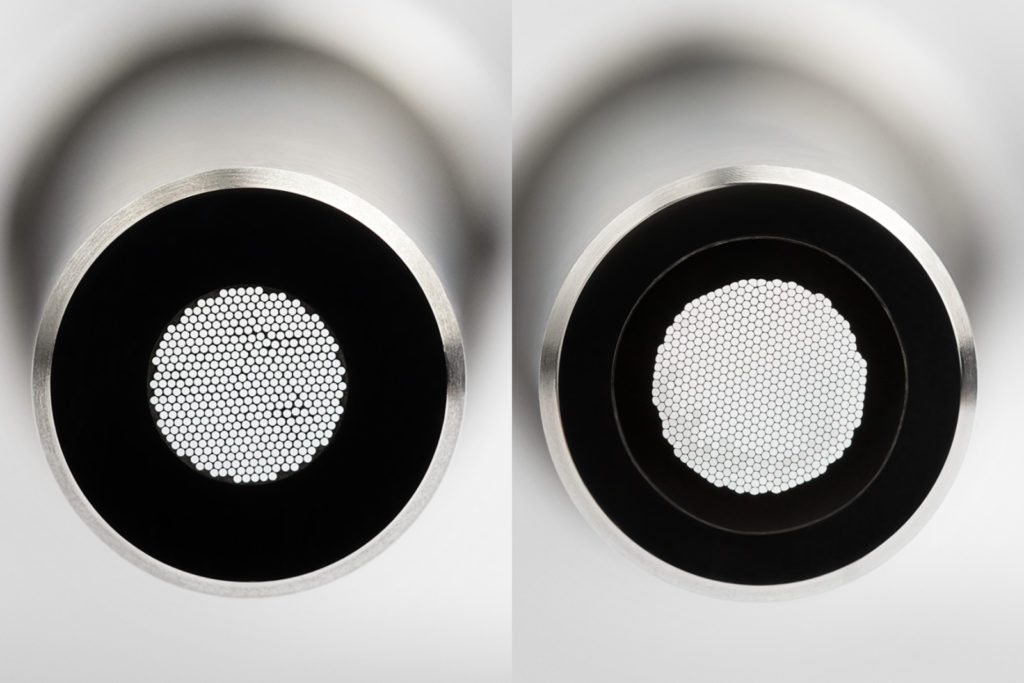
A HFB with proper a active diameter will ensure that it collects the maximum amount of light, because this technology makes it possible to fuse fibers together without the presence of glue between individual fibers, while at the same time there eliminating the free spaces between fibers. The filling factor is close to 1 if HFB is selected. For comparison, the filling factor for a traditionally glued bundle is around 0.85.
Another need that many different industries have is to deliver UV light from a single source to several operating areas. The most popular solution for this is bifurcated fiber bundles with a randomized common end. Randomization makes it possible to ensure that light from the input will be evenly distributed to individual ends with a difference of only ~5%. There is substantial interest and demand for n-furcated assemblies with randomization.
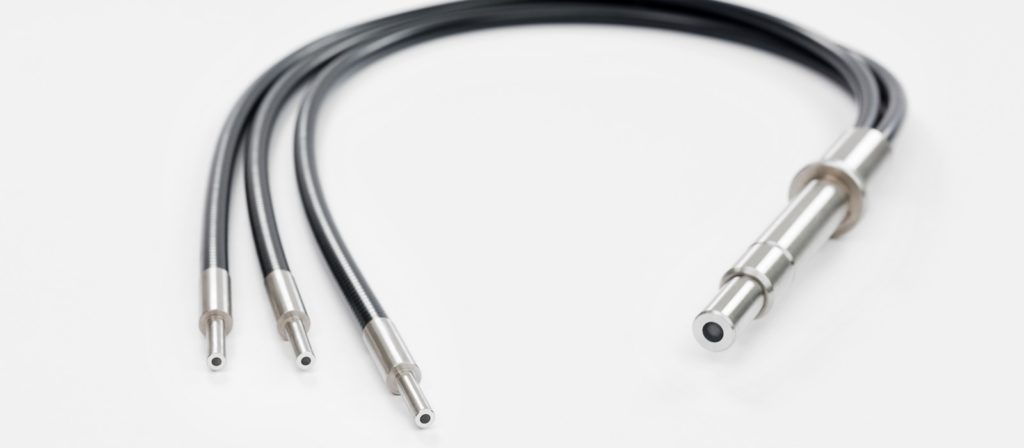
A trifurcated bundle with one HFB input and 3 HFB outputs is shown in the picture above. Furcated assemblies like this one can be used as a combiner as well.
In semiconductor and display production, a common request is to deliver UV light as a long line at the output end—in other words, there is a need to change the UV spot shape from circular to linear.
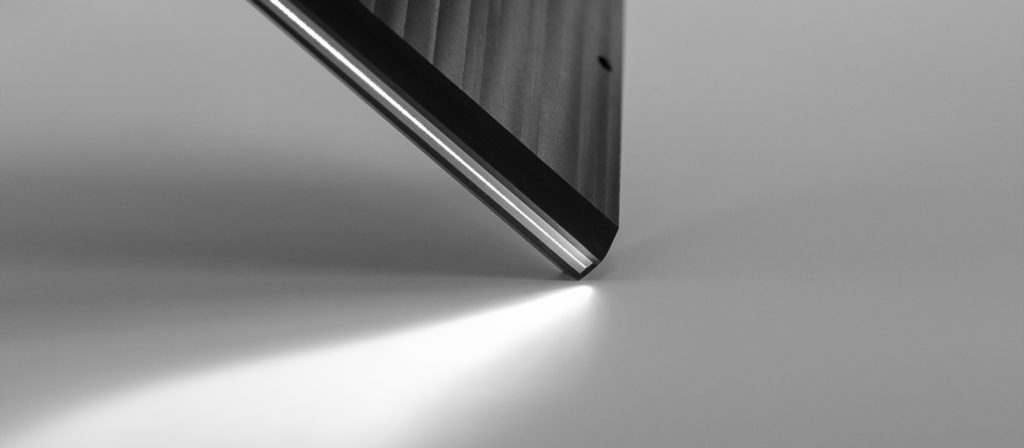
The picture above shows the linear-type output, which provides the possibility to deliver UV light as a 20 cm line to the operating area.
Solarization (the photochemical issue that appears at UV is also called photodarkening) optimized fiber materials—as well as over 30 years of experience in UV fiber solutions—means we’re able to select best approach to provide you with durable, long-term solutions. Our silica/silica fibers ensure the best possible performance, and many of our customers have been using our UV fiber bundles for over 10 years in their equipment.
Need some help?
Our team of advisors can help you in figuring out which components would be the most effective for your project and application needs.
